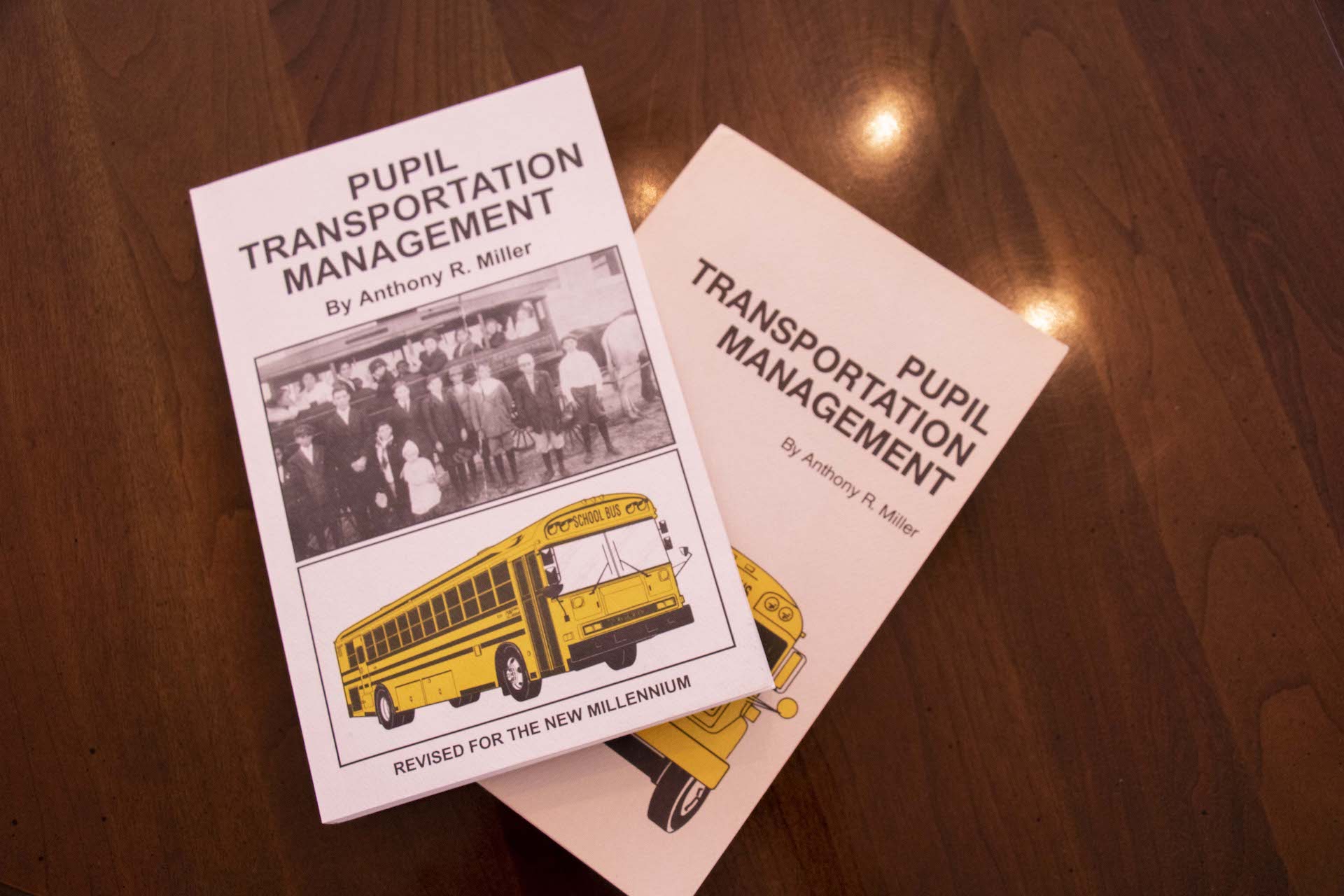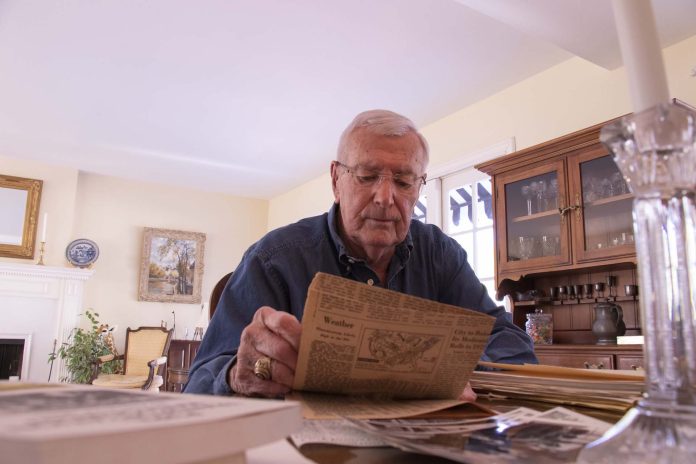It’s hard to over-rate the importance of school transportation. Everyone involved, no doubt, can take pride in fulfilling the core mission of safely getting children to and from places where they can learn. But when the process also becomes a catalyst for positive social change, that adds a whole new dimension.
Such was the case for Anthony Miller, who was the director of transportation for Maryland’s Prince George’s County Public Schools during the tumultuous 1960s. Against a national backdrop of protests and racial tension, he quietly integrated a bus driver workforce that had, like many nationwide, previously been completely segregated.
That ground-breaking move took place in what was then the largest school district in the country. Located outside of Washington, D.C., its approximately 175 schools and 165,000 students were served by a fleet of more than 990 buses.
For Miller, recollections of his own experiences during that period are interwoven with those of the burgeoning Civil Rights Movement.
“One must be aware of the national turmoil regarding racism in the 1960s and 70s,” Miller said. He pointed to marches, new legislation, the assassination of Martin Luther King, Jr., the shooting of Alabama Gov. George Wallace, and the Little Rock, Arkansas desegregation enforced by the U. S. Army as just some examples.
“The entire school bus fleet in Pontiac, Michigan was firebombed. The whole country was upset,” he noted.
Things had not yet gotten to that point when Miller first started his career as a 1955 graduate of the University of Maryland, the year after the historic Brown v. Board of Education U.S Supreme Court decision to begin desegregating schools. After spending years five years as a teacher and coach, he was appointed assistant director of transportation for the Prince George’s County school system, moving into the director’s position in 1965.
In his early years in transportation, the district was expanding yet segregated, and bus drivers only transported students of their own race. But not long after Miller assumed the director’s position, he decided it was time to make a change.
“Thanks to my parents, I was not a segregationist,” Miller recalled. “I grew up in an atmosphere that we are all the same human beings.”
He said his father always made a point of not just espousing that belief but living it in the way he dealt with others in his community. Following through on those values, Miller started assigning drivers on routes that were no longer restricted by the race of the driver. Given the social norms of the time, that may have been seen as a radical move, but Miller and his staff did it without fanfare.
“I started integrating our bus drivers—quietly,” he recalled. He began by assigning one driver, a student at historically black Bowie State University, to transport white students. Then he gradually added others.
Perhaps surprisingly, no one in the community made an issue of the changes. A few parents asked what happened to their previous driver but didn’t raise objections.
“I don’t think people really paid that much attention,” Miller said. “As long as we ran buses safely and on time, I guess that’s what people cared most about. It went well, so I continued to ignore race in driver assignments.”
It was also a time of rapid population growth for Prince George’s County. “We were constantly growing in enrollment,” he recalled. “Every year we bought new buses.”
That trend brought another opportunity for change. Prior to Miller’s time in leadership, it had been standard practice to assign new vehicles only to white drivers. “A new bus was never given to a black driver,” Miller added. “They got the hand-me-downs.”
But as he had with route assignments, Miller changed that way of doing business. In one instance, Miller phoned a driver who had been driving the older model buses for years to tell him he would be driving a newly purchased bus. Not long after, the driver’s son called back to verify the conversation. Miller said he’ll never forget that conversation.
“My father’s not sure about this,” the son responded. “Are you serious?” Indeed Miller was, and the practice soon became routine.
The county’s rapid growth meant the transportation department was constantly hiring new personnel, and that provided Miller yet another chance to break new ground: He began hiring women drivers. As a first step, he invited a staff member’s wife, who had been working as a bus attendant, to complete training and begin driving. Once that barrier was broken, he began employing other women.
“We put some posters up in beauty shops and grocery stores, and that opened the gates,” he explained.
Miller also took a creative approach to the recruitment of drivers. When speaking to parent groups or other audiences, he downplayed expectations for proven driving skills or a transportation background.
“We don’t want you as a driver,” he told them. “We want you to work with kids. Don’t worry if you can’t drive a bus—we’ll train you.”
While Miller’s strategy proved effective, that wasn’t the end of the story. Through the remainder of the 1960s and into the next decade, the move to support integration through school busing led to one headline after another. Busing students to schools outside of their home attendance area was seen by some as the only way to break long-standing patterns of racial segregation. But to others it was anathema.
Although the Prince George’s County superintendent desegrated the schools in 1966, some felt that move didn’t go far enough. Over the next few years, changes in racial balance were modest. What was known as a neighborhood desegregation plan was challenged by four members of the nine-member school board, who eventually sued the other members in federal court. The resulting 1972 decision in the Prince George’s County case as well as others such as in Pontiac, Michigan led to the federal government mandate of busing of students to integrate schools. A year earlier, the U.S. Supreme Court ruled in Swann v. Charlotte-Mecklenburg Board of Education affirming the use of school buses as a means to integrate schools. That practice continued until 2007 when the Court overturned Swann v. Charlotte-Mecklenburg, which led to the rise in choice schools.
Related: Warren County School District Launches First School Bus Safety Program in Western Pennsylvania, Deploys Technology on 80 Buses
Related: South Shore Clean Cities Changes Name to Drive Clean Indiana
Related: New York Association for Pupil Transportation Lauds Governor Hochul for Decisive Action on School Bus Driver Shortage Problem
Related: North Carolina Superintendent Asks Parents to Drive Students Amid Shortages
During the years leading up to the court ruling, Miller found himself working frequently with officials who were trying to develop a workable plan for using busing as a tool for more fully integrating the schools. The attorney for the district routinely asked Miller to accompany him to hearings and other meetings. The process was time consuming and serving as the in-house expert on bus routes and attendance boundaries could be challenging.
Typical was a time when an overly assertive government representative pointed to a map and declared what would be a good route to use. But Miller had to point out that the route in question only existed on paper.
“In reality, there was a creek in the way, and drivers would have to drive four miles out of the way to avoid it,” he recalled.
Once the plans for forced busing were implemented, Miller invited reporters to ride along on bus routes. One reporter, conscious of the trend toward “white flight,” when residents unhappy with the change were leaving the county, asked a driver if she and her three kids were planning to move out of the district. She said, “No, Mr. Miller said we’re going to make this work and I’m going to make it work, too.”
A few years after the new busing system became institutionalized, Miller moved on to a successful career in the private sector. That included starting his own business and publishing a book on school transportation management. Now retired, he resides in Thousand Oaks, California.

Looking back on those momentous years, Miller said he remains thankful to have been given the opportunity to make some forward progress.
“I’m glad I was able to play a part,” he added. “I believed strongly in what we did.”
He is also modest about the results of his work. “I can’t take credit for what happened,” he said. “I was just in the right place at the right time. And the staff was with me.”
At the same time, when asked what his father might say today about his son’s role in advancing civil rights, Miller beamed.
“I think my father would have said, ‘Good for you,’” he concluded.
















